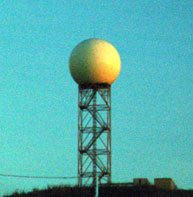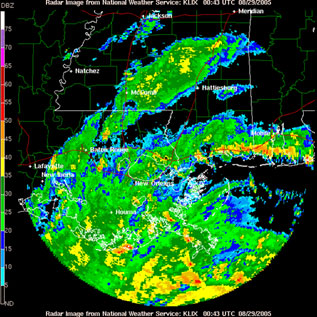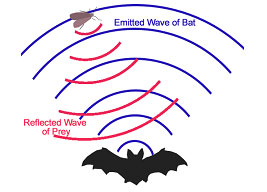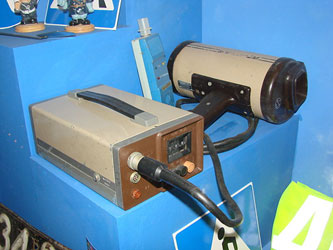
Source: Doppler-Radar-Tower, Intersofia, Wikimedia Commons

Source: Doppler-Radar-Tower, Intersofia, Wikimedia Commons

Source: Hurricane Katrina Doppler, National Oceanic and Atmospheric Administration, Wikimedia Commons
You may have heard the weather reporter refer to her radar as a Doppler radar.
Meteorologists use the Doppler radar to make very precise measurements of the magnitude and direction of a storm's velocity. Therefore, they can make better predictions of where a storm is heading and when it will get there.
![]() Watch this quick video to see how it works.
Watch this quick video to see how it works.
Source: How does a weather radar work?, JoCoEmergencyMgmt, YouTube
Waves can also be Doppler shifted when they reflect off of a moving object. The motion of the object from which they echo shifts the frequency of the reflected wave. Bats and dolphins use this principle to locate and hunt for food. They use a process called echolocation, which involves the emission of a sound wave to locate prey by listening for its echo. A bat's ears are so sensitive that they can tell the size, location, direction, and speed of an insect as small as a gnat from the Doppler shift.

Source: Bat echolocation, Shung, Wikimedia commons
The Doppler shifting of reflected radar waves is an accurate method for determining the speed of objects. Police officers use a radar gun to determine a driver's speed and decide whether a ticket is warranted. The gun does a quick calculation of your speed by determining the frequency shift of a radar pulse.

Source: USSR Radar gun 65, Sergeev Pavel Wikimedia Commons
In summary, you investigated the Doppler effect and saw how it connects you to motorcycle police, bats, and the weather reporter.